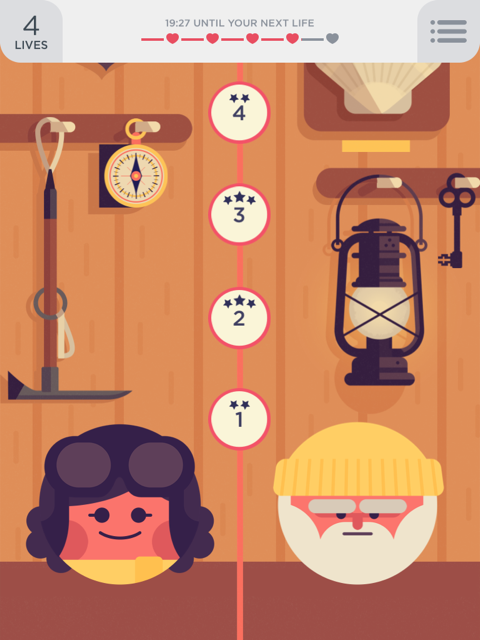When Dots first came out on iPhone in 2013 it earned admiration from gamers and non-gamers alike. The game presents a simple addicting mechanic with a colorful, minimalist, and playful design.
In the vast ocean of mobile games that push players to monetize through pressure and addiction mechanics, appealing to the kids, or social casino mechanics, Dots stood out as a fun game with low monetization pressure. Dots is easy to love, and safe to evangelize to your friends.
Now along comes Two Dots.
In Techcrunch, Jordan Crook describes Two Dots as “A Beautiful Monster” as it takes the nagging monetization mechanics of King’s Candy Crush Saga (which I wrote about here) and grafts them onto our beloved Dots. In another review, The New York Times Bits blog gives Two Dots a positive spin without mentioning its trip to the Candy Crush school of monetization design.
Some of the specific features “inspired” directly by Candy Crush include giving the user limited moves to reach a level goal instead of a timer (and selling extra moves at the point of failure), levels/level based progression, meaningless characters on a level based journey, limited lives (selling a lives refresh), and special power pieces.
As a games entrepreneur with an interest in financial success I admire Candy Crush and its mechanics. Freemium games are here to stay and Candy Crush was innovative in its approach to monetization and game design. That said, I fully understand why many people resent Candy Crush and/or wish the game would fade away already.
I’ve spent about an hour playing Dots on my iPhone and iPad. The Candy Crush wrapper is obvious, and the game is fun and good looking. Level six poses the first real challenge (and monetization touch point).
It’s good to see a New York based game developer with a strong eye toward free to play monetization creating a fun well designed game. I’ll be playing more.

It is very interesting to see how they started with a very simple game mechanic, connecting dots, put that in front of an audience. They saw it take off, and then from that humble start iterated a game design that is so much more. I am sure where the game designers started bears no semblance to where they are today. I also find it interesting that they were able to take a simple game mechanic and iterate upon that to add in the saga experience with the moves and lives mechanics, and make a monetizable game that is pretty much modeled directly from Candy Crush (or some of the other “saga” style games).
I personally do not like it because after playing several levels I find that very little of my time is actually playing a game, most of my time is navigating screens and the UI to get to a game. A typical play cycle is 1. choose a level; 2. level intro; 3. level objective; 4. play a game; 5. results screen, make a decision to share or continue; 6. interstitial; 7. back to the map, choose a level. That’s a lot of friction!
I beat all of the levels, 59 was toughest
Also wanted to mention 35 took a couple days as well.